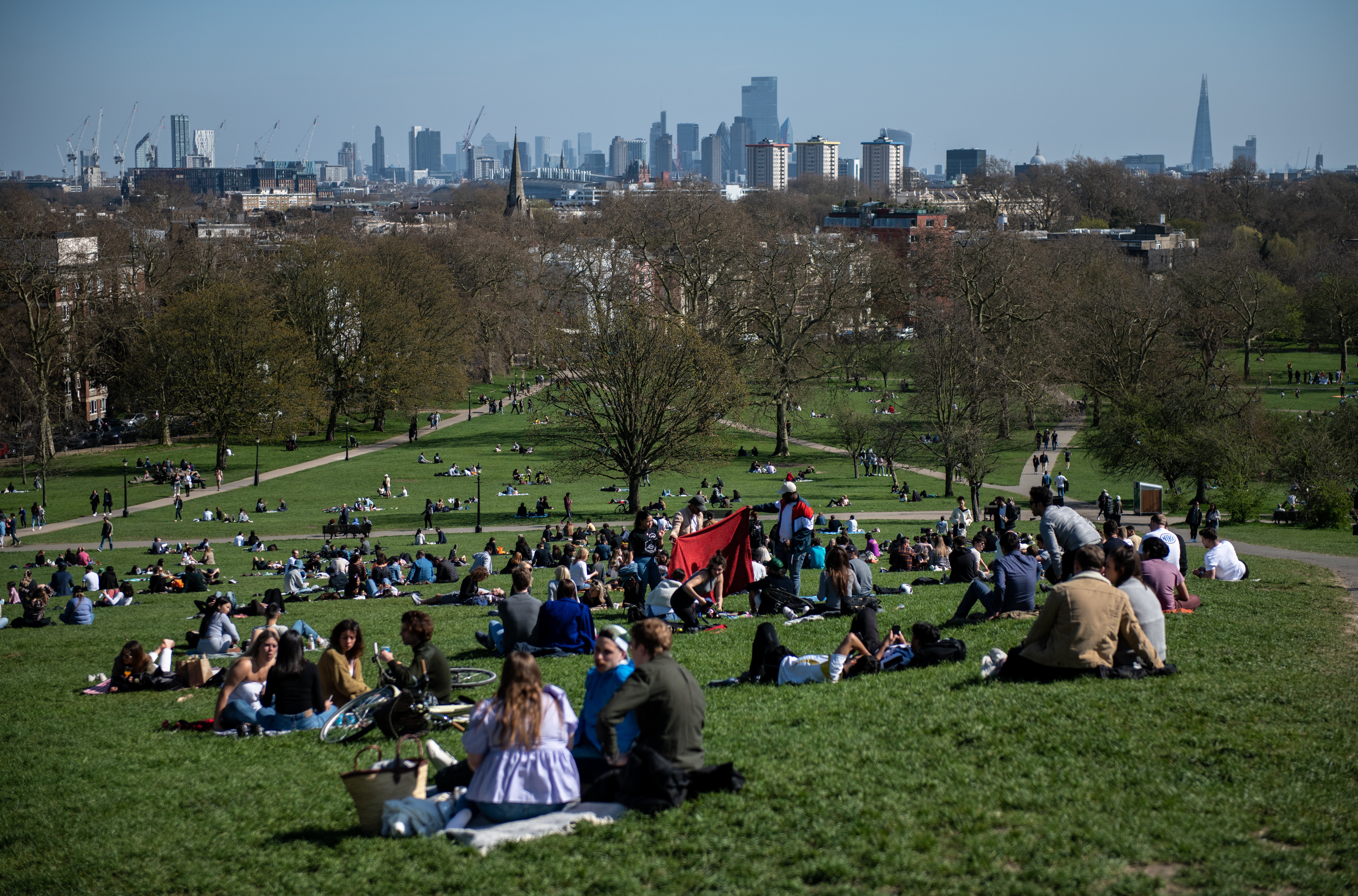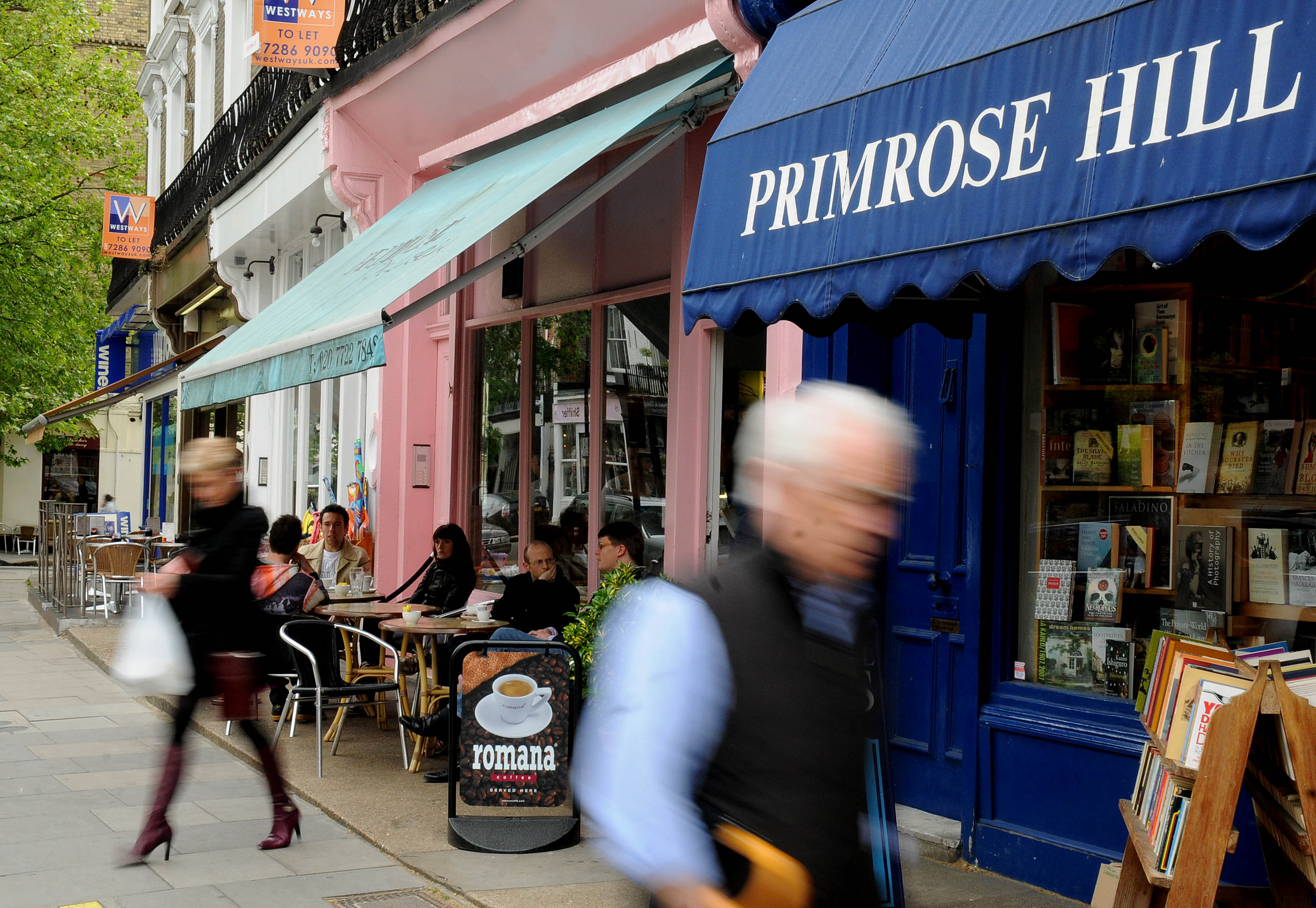How Primrose Hill’s ‘teen era’ could change its future forever
Sylvia Plath called it ‘the last word in London bohemia’; by the Noughties, ‘Promiscuity Hill’ was known as much for well-heeled hedonism as its leafy views and million-pound real estate. But now a magnet for teenagers who come to party from all over the capital, has it entered a darker phase, asks Zoe Beaty


Primrose Hill has always had a story to tell. It’s the home of chocolate-box houses, streets lined with sycamore trees and Victorian lamp posts; the sweetheart of north London. The hill itself overlooks not just the most intimate views over the city – from 210ft up its zig-zagged paths you can see sweeping views of the iconic skyline – but a rich history of fame, fortune and frivolity at its feet. There’s little wonder that for decades, the area has been heralded as perhaps the most coveted postcode in London and, in recent years, certainly the most Instagrammable.
This week, Primrose Hill became the centre of another story far from its pristine image. On New Year’s Eve, 16-year-old Harry Pitman from Tottenham headed to the top of the hill to watch the fireworks with a group of friends. Just minutes before midnight, he was stabbed and, despite the efforts of emergency services, died at the scene. A 16-year-old boy was arrested on suspicion of murder the same night and has since been released on bail pending further enquiries. On Wednesday, a 15-year-old boy was arrested on suspicion of murder, along with an 18-year-old man on suspicion of affray.
Harry’s tragic and untimely death prompted thousands of tributes nationwide, and a vigil held for the teenager near his family home in Downhills Park attracted a large crowd of mourners. But back in Primrose Hill, the discussion quickly turned to a now years-long dispute within the community, with some blaming Primrose Hill’s growing dark side for the fatal stabbing.
In recent years, the hill has become an epicentre for teenage gatherings. During the “lost teen summer” of 2020, the city’s green spaces became a social solace for teenagers (and, let’s be honest, most of us) to drink with friends and play music; an escape from the grim reality of monotony indoors. The influx of young people taking over the city was so big – and so refreshingly joyful for the most part – that it was deemed a “youthquake”. “We’re taking over the city,” one reveller told the Evening Standard at the time. “It’s ours now.”

Ask the locals and, in Primrose Hill, it seems they never really left – heralding the beginning of its teen era. “It’s basically where everyone gathers who are too young to go to bars or clubs,” Guy, 19, from Stoke Newington, says. “They just want to hang out, drink, or do whatever. There are always gathering spots around London; the tunnels under Waterloo Bridge used to be another one. Hampstead Heath. But Primrose Hill is a big hangout spot. Probably the main one, I’d say.”
Guy says that the majority of people hanging out, mostly aged 15-18 he estimates, “don’t really do much”, “but there are a few people who are just overly chaotic. There are big open spaces. Young people don’t have a lot of places to do those kinds of things. It’s just socialising at the end of the day.” He adds that, when he and his friends attended on Halloween of 2020, along with thousands of others, they didn’t stay long. “Someone came up to us and said, ‘Oh yeah, someone’s been stabbed over there [in neighbouring Regent’s Park],” says Guy. “Then I remember someone pointing fireworks at us and we decided to bounce.”
In 2020, some residents began calling for the park to be fenced by gates and closed overnight. Eleanor Sturdy, who has a son of a similar age to Harry Pitman, was one of them,
“There’s been a gradual increase in incidents and difficulties ever since police duty in the area stopped being overnight in 2015, when policing from the Royal Parks police unit was cut back to 11pm,” says Sturdy, 58, who has lived in Primrose Hill since 1994.
“It got much worse during Covid. And then in the heatwaves, it was going on until five, six, seven in the morning. There’s always a lot of litter – nitrous oxide canisters and bottles, and the like.” Sturdy had her phone thrown across the road when she approached one group to ask them to stop playing music, and now worries about her teenage son going out to the area. She says that teens are often setting off illegal fireworks and urinating in residents’ gardens on their way to and from the hill. “Now drug dealers know it’s a venue, they come up and prey on people there,” she adds. “A lot of us feel it’s really sad and unsafe, particularly for teenagers and tourists who come thinking it’s a safe space.”

Primrose Hill has long attracted people from all over London, as well as tourists, who enjoy its views, destination restaurants and flagrant affluence. The area was originally bought from Eton College in the early 19th century to extend the open green spaces that poor people living in north London could use. In another world, it was also “a place where duels and prize fights took place”, according to the Royal Parks which manages the land.
Since then it’s had several flirtations with hedonism – or at least a well-heeled version of it. In the 1960s it was a scene for artists and musicians; Sylvia Plath lived on pastel-washed Chalcot Square while writing The Bell Jar and described it in the novel as “the last word in London bohemia”. The 1990s saw the glamorous “Primrose Hill set” – Kate Moss, Jude Law, Sadie Frost, Noel Gallagher and Sienna Miller among them – move in. By the early 2000s, the hill was nicknamed “Promiscuity Hill” and awash with “wild parties” that went on long into the night. Allegedly, it was a prime spot for wife-swapping among local celebrities. Writing for The Independent, Andrew Johnson said the postcode had gained a reputation for “having a whale of a time with drink, drugs and bed-hopping”.
Throughout all of this, the park has been open to the public 24/7 for 70 years. However, the hill’s “teen era” may be about to change all of that. Now home to celebrities like Daniel Craig, Chris Martin and Jamie Oliver, the youthquake of London’s highly diverse (and wealth diverse) heady teen communities gathering in one space has divided the surrounding community. An ongoing debate rages over whether to install gates around the park. Last year, temporary gates were installed that now close off the park from 10pm to 6am during British Summer Time, with ad-hoc closures through the remainder of the year. Amy McKeown, 43, a resident who campaigned for “open minds, not closed gates” last year, says that the row is simply history repeating itself.
“The reason that Primrose Hill is the only park other than St James’s to not be gated is because the residents themselves refused to have the park gated in the 1970s, and in fact, staged a sit-in until the Royal Parks allowed them to keep the park open, so we’ve been through this loop before,” the mental health consultant says.

“That’s also why the park has lights – which is one of the reasons it’s much safer at night because it’s lit. People want the park closed because it’s not being actively policed or managed but closing it isn’t going to change that at all … If there is illegal activity in the park, as some people say there is, why are we not dealing with it as illegal activity, and looking after the area, and people’s safety, properly with more policing? Closing it will only disperse people gathering there onto the streets. The police themselves have said it’s predominantly a noise issue.”
“They’ll find a way in,” Guy agrees. “There’s no stopping them.” Despite his experience, he doesn’t believe the park should be closed. A 17-year-old from London, who doesn’t wish to be named, feels the same. “It’s usually just a good vibe,” she says. “Sometimes people are playing music, messing about. But didn’t everyone at our age?”
Locals like Sturdy are calling predominantly for better policing and for events to be ticketed and properly managed if there are large gatherings anticipated – all of which were in place the night that Harry Pitman was killed, Royal Parks confirmed in a statement.
The Metropolitan Police also confirmed that there was no specific link between antisocial behaviour in Primrose Hill and Sunday’s fireworks event. The tragic events that occurred at new year raise more pertinent questions: the issues of knife crime, lack of police funding and a rise in antisocial behaviour are not limited to the hill by any means. Crime cannot be contained by gates, and nor can determined teenagers.
Still, Primrose Hill’s story and the debate surrounding its future will go on long after the party has ended. Perhaps it’s time for a new chapter.
Subscribe to Independent Premium to bookmark this article
Want to bookmark your favourite articles and stories to read or reference later? Start your Independent Premium subscription today.
Join our commenting forum
Join thought-provoking conversations, follow other Independent readers and see their replies
Comments